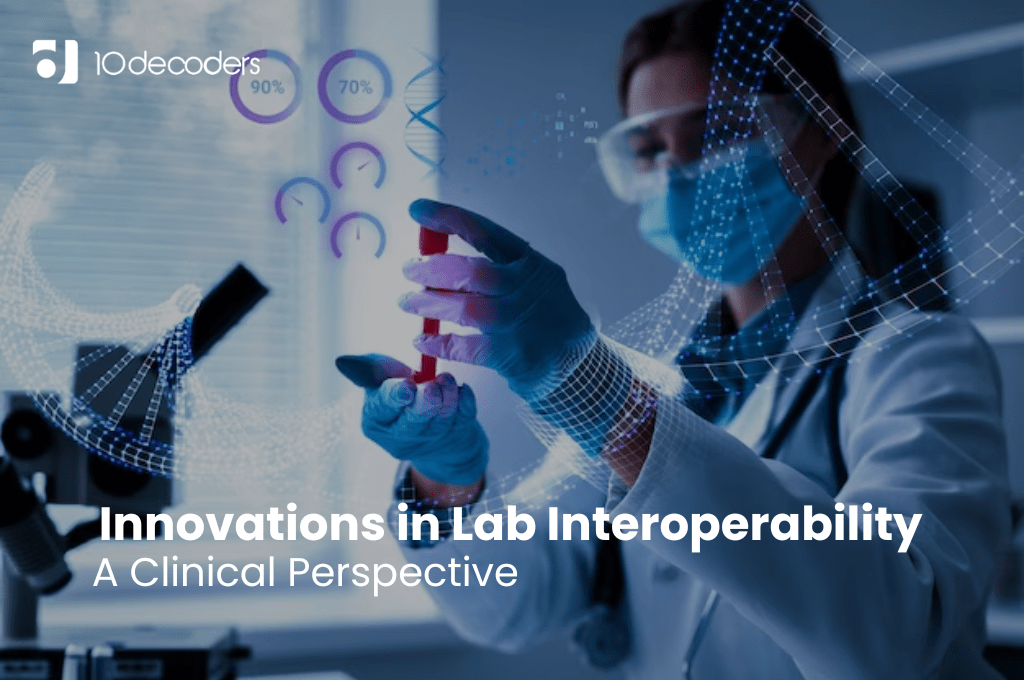Innovations in Lab Interoperability: A Clinical Perspective
Once characterised by analog processes, the clinical laboratory is now undergoing a rapid modernization fueled by digital technologies. At the heart of this evolution lies interoperability, the seamless exchange of data between instruments, systems, and healthcare facilities. In today’s interconnected healthcare landscape, robust lab interoperability is no longer a luxury, but a critical cornerstone for improved patient care, enhanced efficiency, and reduced costs.
For clinicians, the benefits of a well-oiled interoperable lab are manifold. Imagine receiving real-time lab results directly on your patient’s electronic medical record (EMR), eliminating delays and the risk of transcription errors. Picture instant alerts for critical test values, enabling faster clinical decision-making and potentially lifesaving interventions. Envision streamlined workflows where samples flow seamlessly between instruments, minimising human error and reducing turnaround times. This is the power of interoperability in action.
But how is this technological symphony orchestrated? Let’s delve into some of the key innovations driving interoperability in the clinical lab:
1. Standardisation and Harmonization
While HL7 offers a solid foundation, further advancements are paving the way for even deeper interoperability. Initiatives like FHIR (Fast Healthcare Interoperability Resources) are simplifying data exchange by focusing on smaller, targeted data sets, empowering labs and healthcare providers to tailor information sharing to their specific needs. Additionally, emerging semantic standardisation efforts using ontologies promise to bridge the gap between technical data and clinical meaning, ensuring that data is not just exchanged but truly understood for optimal clinical decision-making.
2. Open Platforms and Middleware
The rise of open platforms like the SMART on FHIR standard is fostering an ecosystem of innovative laboratory applications that seamlessly integrate with existing systems. This plug-and-play approach allows labs to customise their workflow with best-of-breed solutions without vendor lock-in. Middleware solutions are also evolving, moving beyond simple data translation to offer advanced capabilities like data normalisation, filtering, and aggregation, providing clinicians with a unified view of patient data from diverse sources.
3. Application Programming Interfaces (APIs)
The API landscape is expanding beyond basic data retrieval, enabling more sophisticated functionalities. Secure, role-based access controls ensure data privacy while allowing authorised applications to trigger notifications, automate workflows, and even initiate lab tests directly from EMRs. As the API ecosystem matures, we can expect even more groundbreaking applications, such as real-time integration with wearable devices and AI-powered decision support tools directly at the point of care.
4. Cloud-based Solutions
The cloud is not just about storage; it’s about collaboration and innovation. Cloud-based LIS platforms facilitate instant data sharing and real-time collaboration between geographically dispersed labs and healthcare providers. This opens doors for telepathology, remote consultations with specialists, and even multi-institutional research projects, ultimately leading to improved access to specialised care and accelerated development of new diagnostic and therapeutic approaches.
5. Artificial Intelligence (AI) and Machine Learning (ML)
AI and ML are not just buzzwords; they are transforming how we interpret and utilise lab data. By analysing vast datasets, AI algorithms can identify subtle patterns and correlations that might escape human eyes. This empowers clinicians to detect early signs of disease, predict potential complications, and personalise treatment plans with greater accuracy and precision. Furthermore, AI-powered automation of routine tasks can free up valuable time for healthcare professionals to focus on complex cases and patient interactions.
The Clinical Impact
These innovations are translating into tangible benefits for patients and clinicians alike. Improved interoperability leads to:
- Faster diagnosis and treatment: Real-time access to accurate results allows for quicker response to critical findings, potentially saving lives.
- Reduced errors and improved safety: Standardised data formats and automated workflows minimise human error in data entry and interpretation, enhancing patient safety.
- Enhanced care coordination: Sharing of patient data across healthcare providers fosters collaboration and better-coordinated care plans, leading to improved patient outcomes.
- Reduced costs and increased efficiency: Streamlined workflows and automated processes optimise lab operations, leading to cost savings and improved laboratory throughput.
Challenges and the Road Ahead
Despite the promise, challenges remain. Legacy systems, data privacy concerns, and cybersecurity threats are real hurdles that need to be addressed. Continuous education and training for healthcare professionals are crucial to ensure effective utilization of interoperable systems. However, with concerted efforts from technology developers, healthcare institutions, and policymakers, these challenges can be overcome.
Conclusion
The journey towards a fully interoperable clinical laboratory is ongoing, but the rewards are undeniable. By embracing innovative technologies and fostering collaboration, we can unlock the potential of interoperability to create a truly connected healthcare ecosystem, where data flows freely and seamlessly, empowering clinicians to deliver the best possible care to their patients. The future of clinical laboratories is not just about data; it’s about transforming data into knowledge, and knowledge into improved lives. Let’s embrace the symphony of interoperability and orchestrate a healthcare future where every note resonates with the human touch of excellence.



